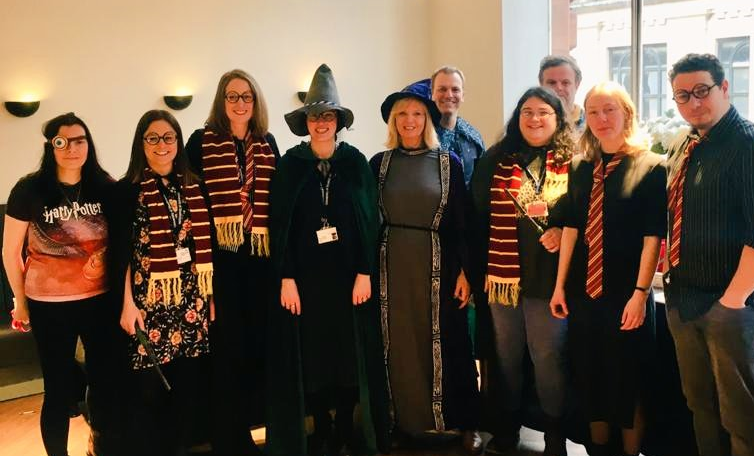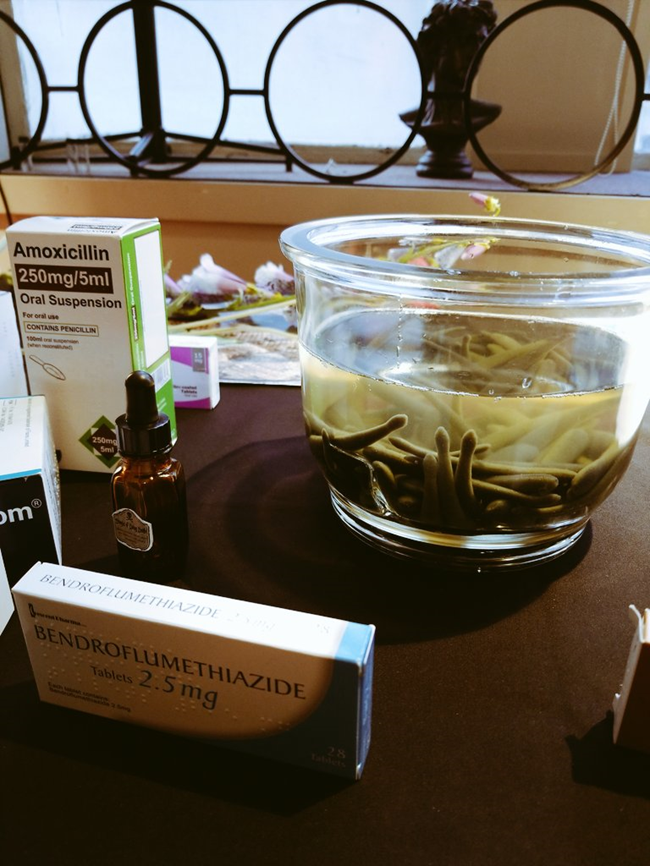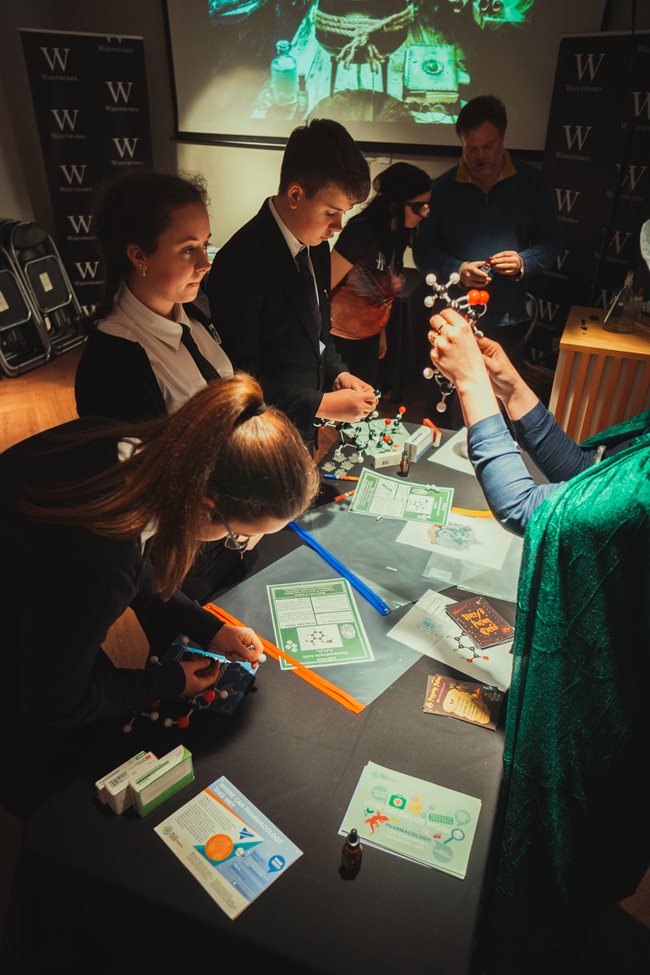The Harry Potter books describe many spells, potions, magical trees and leeches. Whether by virtue of the author’s research or by sheer coincidence (and with a bit of Harry Potter imagination), some of these have ingredients with pharmacological properties! I hold Café Scientifique events every month in Waterstones in Glasgow and knew they had a big Harry Potter day coming up for Harry Potter Book Night. So with BPS support and the help of Margaret Cunningham, Zahra Rattray, Iain Oswald and Alan Kennedy, the event was magicked up! The idea was to inspire 13- to 18-year-olds to think about pharmacology as a career as early as possible. My inspiration to be a pharmacologist was from a lecture I received way back in 1979 at Edinburgh University. The lecture explained how plants and animals were the origins of many drugs. It blew my mind (why do humans have receptors for compounds made in plants?). We wanted to engage young imaginations with pharmacology in the same way!
We all dressed up in character, including a team of young researchers who helped out on the night. We started with a brief introduction to pharmacology and careers in pharmacology. The young audience was shown various plants and animals – such as foxglove (digitalis), poppy (opium), leeches (anti-coagulants), a venomous snake (neuro-muscular blockers), a puffer fish (tetrodotoxin), belladonna (atropine) – and we discussed the drugs derived from these.

Our wonderful Harry Potter team
The audience then played a bespoke card game, which asked them to match up Harry Potter spells and potions with potential drugs. For example, the Whomping Willow, as a willow, is similar to the tree from which aspirin was first discovered! One of the Harry Potter potions called the Draught of the Living Dead contains valerian, a medicinal herb used to aid sleep by the ancient Greeks and Romans. Leeches (we had a pot of very realistic artificial leeches!) are still used in the clinic and contain hirudin, used to treat blood clots and bruises. Pepperup Potion contains mandrake root, which contains the anti-cancer drug etoposide, and Wolfsbane Potion contains aconite, which can be used as a poison but also as a traditional Chinese herbal medicine).

Leeches are still used in medicine today!
The other potions with no active ingredients were, of course, placebos. We discussed all these and then the audience was given molecule kits and instructions on how to make their own aspirin or provided with aspirin models made on a 3D printer to paint. We even had some chemistry going on, with magic colour changes through redox chemistry.

The young students get hands-on with pharmacology
The feedback we received was really great. For example:
We enjoyed learning about different medicines and how they worked and how they related to Harry Potter. Also making the molecule models was fun. They were both useful and made me more interested in pharmacology.
– Emma, 16 years old
At the start of the event, we asked who was considering a career in pharmacology and got no hands up. At the end we repeated this and at least half of the children put their hands up – a magic result!
We now plan to use this as a ‘pop-up’ event at science festivals and in schools. If anyone is interested in us magically popping up in your area, just contact us!
Comments
If you are a British Pharmacological Society member, please
sign in to post comments.